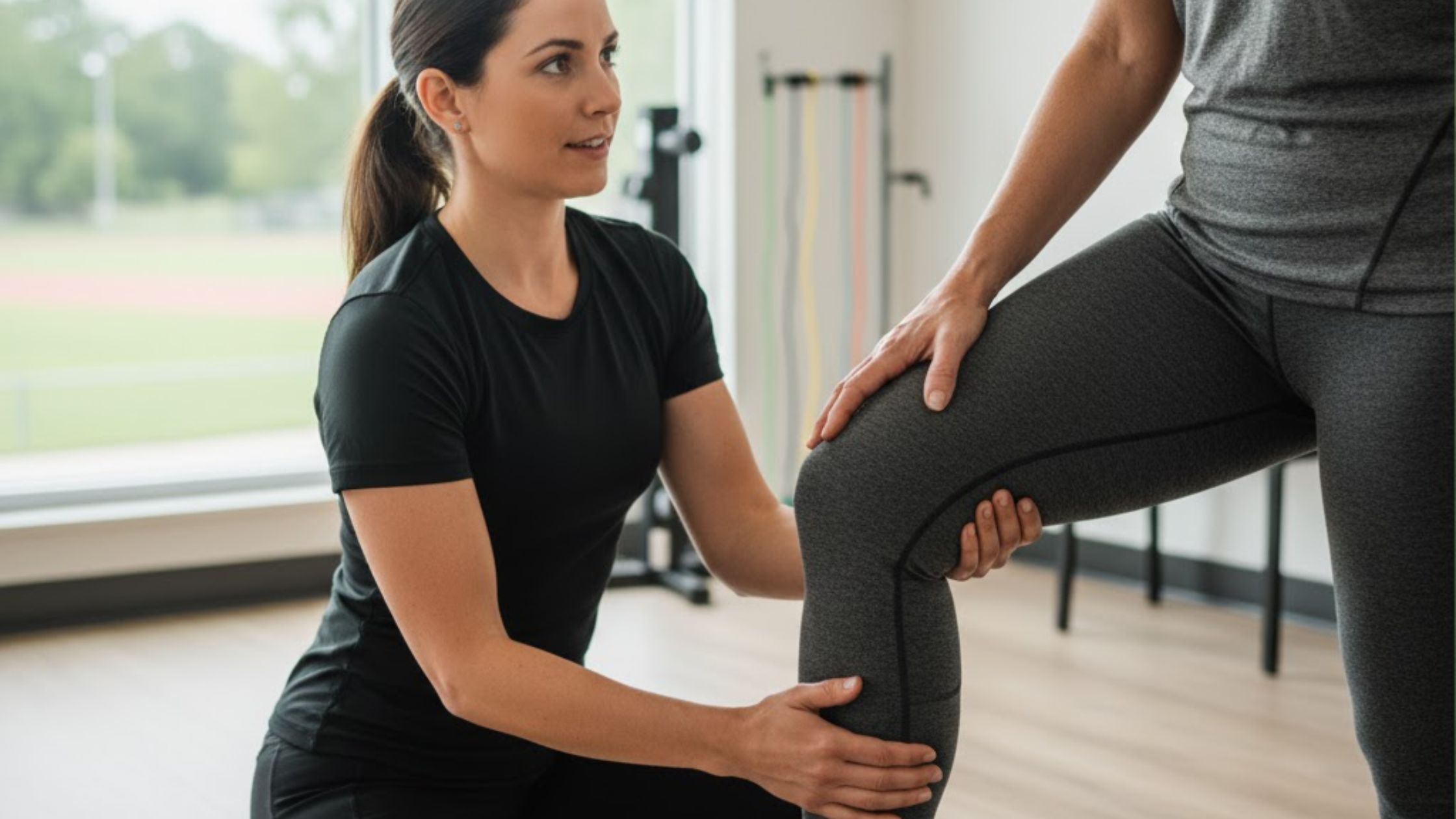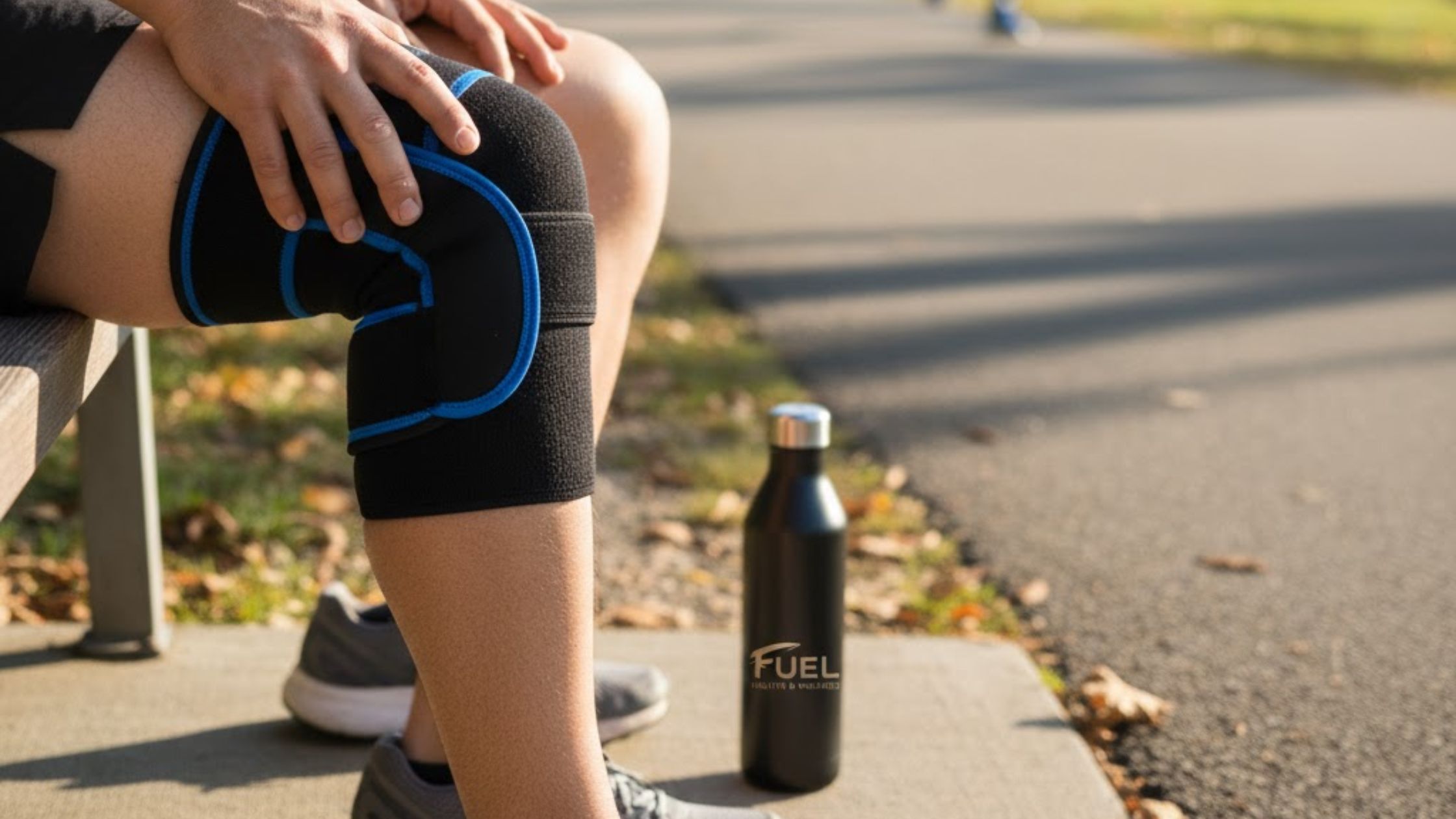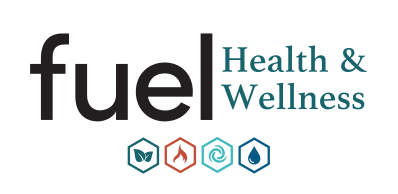If you are a runner, the feeling of the pavement beneath your feet and the rhythm of your stride is a powerful source of motivation and well-being. However, that intense relationship with running can sometimes be disrupted by the sudden, sharp reality of a leg or knee injury. Whether it’s the persistent ache of the condition known as runner’s knee, the sharp pain on the outside of your leg from Iliotibial Band Syndrome, or a painful heel due to Plantar Fasciitis, these common issues can stop you mid-stride. Utilizing expert therapeutic care is essential for not only relieving pain but also for identifying the root cause of the problem, allowing you to return to the sport you love stronger, more efficient, and with a significantly lower risk of re-injury. The specialists at Physical Therapy Grand Rapids, MI help runners fully understand the intricate biomechanics of their bodies to ensure a complete, long-lasting recovery.
How long does it take to recover from runner’s knee with physical therapy?

The recovery timeline for Patellofemoral Pain Syndrome, commonly called runner’s knee, varies widely because it depends heavily on the injury’s severity, consistency in treatment, and overall physical health. Mild to moderate cases of runner’s knee often show significant improvement within four to eight weeks once a targeted regimen is implemented. This regimen is primarily focused on reducing inflammation and restoring proper muscular function around the hip and knee. For a comprehensive recovery, especially for athletes aiming to return to high-mileage training, the entire process—from initial pain relief to full, confident return-to-sport—typically requires a dedicated commitment of two to four months of specialized care. The sooner you start a customized program with Physical Therapy Grand Rapids, MI, the faster and more reliably you can expect to achieve a successful outcome.
The goal of treatment is not simply to eliminate pain but to fix the underlying mechanical issues that led to the injury in the first place. Without addressing these root causes, the pain may subside only temporarily, leading to a frustrating cycle of recurrence once training intensity increases. A successful treatment plan includes a careful blend of therapeutic exercises, manual manipulation techniques, and movement pattern adjustments tailored to the individual runner’s unique needs and running style. This deliberate, structured approach ensures that the return to running is permanent, safe, and built upon a foundation of genuine physical resilience.
Comprehensive Assessment: The Foundation of Athletic Rehabilitation
Before any treatment can begin, a detailed and precise evaluation is the most critical step in creating a path to recovery. Every runner’s body is a unique machine, and the source of pain felt in the knee may actually originate from a weakness in the hip or ankle. An experienced sports injury therapist understands this interconnectedness and performs a holistic assessment that examines the entire kinetic chain—from the feet up to the spine. This initial evaluation provides the essential data needed to craft a highly effective and personalized recovery strategy.
The Importance of Running Gait Analysis
A crucial part of the assessment is a thorough running gait analysis, often performed using video technology to slow down and meticulously study your stride. The therapist observes how your foot strikes the ground, how your knee tracks over your foot, and the stability of your pelvis. Small deviations in your running form, such as excessive overpronation (inward rolling of the foot) or dynamic knee valgus (the knee collapsing inward), are often invisible to the naked eye but can place tremendous stress on the lower limbs over thousands of repetitions.
Identifying these biomechanical abnormalities is the difference between treating a symptom and curing the problem. For instance, weak gluteal muscles (specifically the Gluteus Medius) may cause the hip to drop slightly during the stance phase of running. This small movement then forces the femur (thigh bone) to rotate internally, which subsequently misaligns the patella (kneecap) in its groove, leading directly to the pain associated with runner’s knee. The gait analysis precisely maps this chain of events.
Evaluating Muscular Imbalances and Strength Deficits
Beyond observing movement, the assessment includes strength and flexibility testing for key muscle groups. A runner might have powerful quadriceps but severely weak hip abductors and hip extensors (the glutes and hamstrings), creating a strength imbalance that contributes to injury. The therapist measures the flexibility of the hip flexors, hamstrings, and calf muscles, as tightness in these areas can restrict movement and alter foot mechanics, increasing strain on the Achilles tendon and plantar fascia.
The findings from these tests are then used to set objective, measurable goals for your athletic rehabilitation. If you’re looking for help with your running pain, the experts at Fuel Health & Wellness provide this level of comprehensive, data-driven assessment to ensure a tailored recovery plan. The process is collaborative, making sure you fully grasp how your body moves and how slight modifications can dramatically improve your performance and reduce your injury risk.
| Injury Name (Entity) | Common Symptoms in Runners | Key Physical Therapy Focus |
| Patellofemoral Pain Syndrome (Runner’s Knee) | Dull, aching pain under or around the kneecap, especially when going up or down stairs, squatting, or sitting for long periods. | Strengthening of Gluteus Medius/Minimus and Vastus Medialis Oblique (VMO), Patellar taping, Gait retraining. |
| Iliotibial (IT) Band Syndrome | Sharp, burning pain on the outside of the knee (lateral epicondyle) that typically occurs predictably after a certain distance. | Manual therapy to release tension in the IT band and Tensor Fasciae Latae (TFL), strengthening of hip abductors, soft tissue mobilization. |
| Achilles Tendinopathy | Pain and stiffness along the Achilles tendon, usually worse in the morning or after periods of rest; thickening of the tendon. | Eccentric loading exercises (heel drops), deep soft tissue mobilization of the calf complex (gastrocnemius and soleus), ankle range of motion exercises. |
| Plantar Fasciitis | Sharp, stabbing pain in the heel or arch of the foot, most severe with the first steps in the morning. | Plantar fascia specific stretching, intrinsic foot muscle strengthening, night splints, aggressive calf stretching. |
Treating Patellofemoral Pain Syndrome: Effective Runner’s Knee Treatment

Runner’s knee, or Patellofemoral Pain Syndrome (PFPS), is a major cause of knee pain among runners. It arises when the kneecap (patella) does not glide smoothly in the groove of the thigh bone (femur), causing irritation to the cartilage or the surrounding soft tissues. Effective runner’s knee treatment must stabilize the patella by improving the control coming from both the hip and the foot. Our approach to Physical Therapy Grand Rapids, MI targets this mechanism directly.
Targeted Strength Training for the Kinetic Chain
A key component of managing PFPS involves strengthening the hip stabilizers—the gluteal muscles. When these muscles are weak, the femur rotates inward during the running cycle, which increases the pressure and friction on the patellofemoral joint. Exercises like clam shells, single-leg bridges, and lateral band walks specifically target the Gluteus Medius and Minimus to stabilize the pelvis and control the rotation of the leg. This stability is fundamental to ensuring the patella tracks correctly.
Furthermore, strengthening the quadriceps muscle, particularly the Vastus Medialis Oblique (VMO), which helps pull the kneecap inward, is essential. However, it is crucial that these exercises are performed with proper form, often initially within a pain-free range of motion, to avoid further aggravation of the already sensitive joint. Therapists use cues and positioning to isolate the VMO, ensuring this critical muscle is actively engaging to maintain patellar alignment during dynamic movements.
Manual Therapy and Taping Techniques
In the initial stages of PFPS, manual therapy is often employed to relieve pain and improve joint mobility. A therapist may use gentle joint mobilization techniques to ensure the kneecap is gliding optimally. They may also apply soft tissue massage to tight structures like the iliotibial band or the lateral quadriceps that might be pulling the patella out of alignment. This hands-on approach quickly reduces discomfort and prepares the tissues for the active strengthening phase.
Kinesiology taping or patellar taping is another highly effective short-term intervention. The tape is applied strategically to provide a subtle external cue to the body, guiding the patella into a better alignment during running and walking. This immediate adjustment can provide instant pain relief, allowing the runner to engage more effectively in their therapeutic exercises without the fear of pain. It serves as a temporary support system while the underlying muscular strength is being developed.
Addressing Iliotibial (IT) Band Syndrome: Lateral Knee Pain

Iliotibial (IT) Band Syndrome is characterized by sharp, burning pain felt on the outside of the knee, typically caused by the distal part of the iliotibial band—a long, thick band of fascia running from the hip to the knee—rubbing against the lateral femoral epicondyle. This condition is often misunderstood as simple tightness, but effective long-term management requires correcting the dynamic hip control. Addressing ITBS is a cornerstone of effective sports injury therapy Grand Rapids.
Core Causes and Assessment
While the pain is felt at the knee, the true origin of ITBS is usually found in the hip and gluteal region. Factors contributing to ITBS include:
- Weak Gluteal Muscles: Insufficient strength in the gluteus medius and minimus allows the hip to adduct (move inward) excessively during running, increasing tension on the IT band.
- Overpronation of the Foot: When the foot rolls inward too much, it causes the leg to rotate internally, similarly putting strain on the IT band.
- Excessive Training Load: Rapid increases in mileage, hill running, or excessive downhill running can place repeated, high-load stress on the structure, leading to inflammation.
The physical therapist will conduct tests to isolate the stability of the hip, such as the single-leg squat or the Trendelenburg test, to confirm hip abductor weakness. They will also meticulously examine the ankle and foot to determine if improper footwear or a lack of arch support is contributing to the inward rotation of the leg during the stance phase of running.
Specific Treatment Strategies for ITBS
Treatment is multifaceted, focusing initially on pain reduction and then moving rapidly into long-term corrective strengthening. Manual techniques, such as deep soft tissue mobilization or release of the Tensor Fasciae Latae (TFL), are utilized to address the tightness in the hip area. This helps to reduce the pulling force on the IT band at the knee joint.
However, the most lasting changes come from targeted therapeutic exercise. The focus remains on strengthening the hip abductors and rotators. Side-lying leg raises, resistance band exercises, and single-leg balance drills are progressively introduced to build dynamic stability. We ensure runners at Fuel Health & Wellness understand that foam rolling alone is insufficient; it is the combination of releasing the tight tissues and strengthening the weak, supporting muscles that provides a complete solution.
Overcoming Achilles Tendinopathy and Plantar Fasciitis
Injuries involving the foot and ankle, such as Achilles Tendinopathy and Plantar Fasciitis, are incredibly common and can be highly debilitating for runners. These conditions result from chronic overload of the tissues, often due to poor ankle mechanics, insufficient calf muscle flexibility, or improper footwear. Effective rehabilitation for these areas centers on controlled loading and restoring the flexibility of the calf-foot complex.
Addressing Achilles Tendinopathy
Achilles Tendinopathy involves pain and degradation of the collagen fibers in the Achilles tendon, the largest tendon in the body. The condition typically presents as stiffness and soreness, especially first thing in the morning or after activity. The gold standard for treating this condition is progressive, controlled loading through eccentric exercises.
Therapists will guide runners through a highly specific protocol of heel drops, performed with straight and bent knees to target both the gastrocnemius and soleus muscles. This controlled lengthening under load helps remodel the tendon fibers, making them stronger and more resilient to the demands of running. Alongside this, manual manipulation of the ankle and foot joints may be performed to improve joint mobility, ensuring that the ankle joint moves freely and efficiently, which reduces strain on the tendon.
Healing Plantar Fasciitis
Plantar Fasciitis is an inflammation of the thick band of tissue (plantar fascia) that runs across the bottom of the foot, connecting the heel bone to the toes. It is notorious for causing intense heel pain, particularly upon waking. While stretching is helpful, the most successful treatment programs strengthen the intrinsic muscles of the foot, which support the arch.
Therapeutic intervention includes:
- Plantar Fascia Stretching: Specific stretches performed against a wall or step to lengthen the fascia and calf muscles.
- Foot Intrinsic Muscle Strengthening: Exercises like “toe scrunches” or picking up marbles with the toes help build the foundational strength necessary to support the arch during high-impact running.
- Gait and Footwear Modification: Assessing running shoes for appropriate support and potentially recommending over-the-counter or custom orthotics to correct excessive pronation or stabilize the foot. This comprehensive approach is part of our commitment to athletic rehabilitation and long-term health.
Advanced Modalities for Accelerated Athletic Rehabilitation

In addition to foundational therapeutic exercise and manual manipulation, modern sports injury therapy utilizes advanced modalities to accelerate tissue healing and reduce pain. These specialized techniques are often incorporated into a personalized treatment plan to help runners get back to training faster and more efficiently.
Dry Needling and Cupping
Dry needling involves inserting thin, sterile needles into specific trigger points within muscles (like the glutes, hamstrings, or calves) to release tension and alleviate pain. This technique can effectively reset chronically tight or overactive muscle fibers that are contributing to biomechanical faults, such as the tightened Iliotibial band or an overstressed quadriceps. The release achieved through dry needling can immediately improve range of motion and reduce the pain that often limits a runner’s ability to perform necessary therapeutic exercises.
Myofascial decompression, or cupping, uses suction cups applied to the skin to lift the soft tissue and create space. This action encourages blood flow to the area, which aids in cellular repair and reduces swelling in the connective tissues. It can be particularly effective in mobilizing tissues that are restricted due to overuse or scarring, helping restore the smooth, uninhibited movement required for optimal running form.
Blood Flow Restriction (BFR) Training
Blood Flow Restriction (BFR) training is an innovative technique that uses specialized cuffs placed around the upper thigh or arm to restrict blood flow temporarily during low-load exercise. This technique allows a runner to achieve the muscle-building benefits typically associated with high-intensity weight training (heavy loading) while only lifting very light weights. This is invaluable in the early stages of recovery when heavy loading is impossible due to pain or injury.
BFR minimizes stress on the healing joints, cartilage, and tendons, which is a significant advantage when recovering from injuries like PFPS or Achilles Tendinopathy. By allowing muscles to be safely strengthened early in the recovery process, BFR training helps prevent muscle atrophy and accelerates the return to full functional capacity.
The Return-to-Run Protocol: A Structured Approach
Getting pain-free is only half the journey; the final, most crucial step is the safe return to running. Many runners fail at this stage by doing too much, too soon, leading to a quick recurrence of the injury. A structured Return-to-Run Protocol is essential to successfully transition from the rehabilitation environment back to the road or trail.
This protocol is managed by the physical therapist and is based on objective measures of strength, pain tolerance, and dynamic stability, not just the subjective feeling of being “better.” It starts with short intervals of running combined with walking, gradually increasing the running time while monitoring the body’s reaction. The initial surfaces are often flat and predictable, slowly progressing to include hills and varied terrain.
The structure of the protocol typically involves a measurable progression over several weeks, where the therapist adjusts the speed, distance, and frequency based on the runner’s response. If a runner experiences pain or discomfort above a certain threshold (e.g., a 2/10 pain scale), the program is adjusted by stepping back to the previous successful level. This meticulous management ensures that the tissues have adequate time to adapt to the increasing workload, preventing overload and ensuring a successful long-term outcome. This is where the dedicated guidance of our team makes a significant difference.
Fueling Performance: Integrated Health and Wellness

Recovery from a running injury extends beyond the walls of the clinic. Optimal healing requires attention to overall health, nutrition, and lifestyle factors. Runners need to consider how their diet supports tissue repair, how hydration impacts performance and recovery, and how sufficient, high-quality sleep acts as a powerful restorative tool.
Nutrition and Tissue Repair
The body requires specific building blocks to repair damaged muscle fibers, tendons, and ligaments. Adequate protein intake is vital, as proteins provide the amino acids necessary for collagen synthesis and muscle growth. Furthermore, micronutrients like Vitamin C, which is essential for collagen production, and Vitamin D, which is critical for bone health, play non-negotiable roles in the healing process. While a physical therapist is not a nutritionist, they often provide guidance or referrals to ensure runners are optimizing their fueling strategies for recovery and performance.
Lifestyle Adjustments and Stress Management
High-intensity training often increases stress hormones, which can impede recovery if not managed properly. Chronic psychological stress also affects the body’s ability to heal and can increase muscle tension. The holistic approach includes discussing stress management techniques, advocating for active recovery days, and ensuring that the running schedule is balanced with appropriate rest. This focus on the athlete as a whole person, not just an injury site, is what sets high-quality sports injury therapy Grand Rapids apart. For a truly integrative approach, you can explore the services offered by Fuel Health & Wellness.
Advanced Training for Long-Term Injury Prevention
Once rehabilitation is complete, the focus shifts entirely to prevention. The goal is to ensure the runner never returns to the state that caused the initial injury. This involves establishing a personalized pre-habilitation routine that focuses on maintaining the strength and mobility gains achieved during therapy. This routine should become a non-negotiable part of the runner’s weekly training schedule.
The prevention plan often emphasizes specific areas of weakness that were identified in the initial assessment:
- Hip and Core Stability: Maintaining a strong, stable core and pelvis is the foundation of efficient running and reduces strain on the lower extremities.
- Mobility: Regularly performing specific stretches for tight areas like the hip flexors and calf complex maintains full range of motion, reducing the risk of compensatory movement patterns.
- Foot and Ankle Strength: Continuing with intrinsic foot muscle exercises ensures the foot acts as a stable platform upon impact.
These tailored maintenance programs ensure that the runner’s body is robust enough to handle the cumulative stress of consistent training, allowing for continued progression and success without setbacks. Understanding how to manage your body’s unique mechanics for the long run is the ultimate benefit of expert care.
Addressing Other Common Runner Injuries
While runner’s knee and ITBS are prevalent, Physical Therapy Grand Rapids, MI also helps runners recover from a variety of other conditions, each requiring a precise, targeted treatment plan.
Shin Splints (Medial Tibial Stress Syndrome)
Shin splints, or Medial Tibial Stress Syndrome (MTSS), cause pain along the inner edge of the tibia (shin bone). This is typically an overuse injury often seen in runners who rapidly increase their mileage or run on hard surfaces. The treatment focuses on reducing inflammation, correcting biomechanical flaws (like excessive foot pronation), and strengthening the lower leg muscles, particularly the muscles responsible for lifting the foot (dorsiflexors). Adjusting running mechanics and ensuring proper shoe support are critical components of recovery.
Hamstring and Calf Strains
Muscle strains in the hamstring or calf are common during speed work or hill training, where explosive power is required. Rehabilitation involves an initial period of relative rest followed by controlled, progressive stretching and strengthening. It is vital to restore the muscle’s flexibility and strength gradually to prevent re-injury. The strengthening phase will include exercises focusing on eccentric control, as most strains occur during the muscle’s lengthening under load.
Stress Fractures
A stress fracture is a tiny crack in a bone, usually in the tibia or metatarsals, caused by repetitive force and insufficient rest. This is a severe overuse injury that mandates a period of complete rest from running. While the fracture heals, physical therapy focuses on maintaining cardiovascular fitness through non-weight-bearing activities like swimming or cycling. Once cleared by a physician, the therapist carefully guides the runner through a highly conservative return-to-sport progression, emphasizing bone health and corrective strength work to ensure the bone can tolerate future training loads.
Frequently Asked Questions About Runner Recovery
Getting injured naturally leads to many questions about the recovery process, the path back to running, and how to prevent future issues. We believe in empowering runners with full knowledge and clear answers every step of the way.
1. Can I run through the pain of runner’s knee?
No, you should generally avoid running through the pain, especially if the pain level is moderate or sharp, as it typically indicates tissue irritation that will worsen with continued activity. Mild discomfort during the first few minutes of a run that subsides quickly might be manageable, but persistent or increasing pain suggests the tissues are being overloaded and require rest and professional intervention. Ignoring true pain often extends the recovery period significantly.
2. Is ice or heat better for a running injury?
In the initial acute phase (first 48-72 hours) immediately following an injury, ice is generally recommended to help reduce pain, inflammation, and swelling. For chronic conditions or persistent aches, heat can be beneficial before activity to warm up and loosen tight muscles and joints. After a run or a therapeutic exercise session, especially if it caused discomfort, ice remains the better choice for managing localized irritation. Your therapist will provide specific guidance tailored to your condition.
3. How often do I need to attend physical therapy sessions?
Initially, during the acute phase of pain management and movement restoration, attending sessions two to three times per week is common for consistent progress. As symptoms improve and you transition into the strengthening and return-to-run phases, the frequency often decreases to once or twice a week, allowing you more time to focus on independent home exercise completion. The goal is always to transition you to an independent program as soon as safely possible.
4. What is the single most important factor for preventing running injuries?
The single most important factor is consistency in a well-balanced training schedule that includes strength training, mobility work, and adequate rest. Focusing only on running volume without incorporating strength work to support the hips and core is a common mistake. Preventing injuries is about maintaining a body that is strong enough to handle the running load, not just a body that can endure running distance.
5. Do I need custom orthotics to correct my running form?
Not always. While orthotics can be very helpful for individuals with significant overpronation, high arches, or structural foot issues, they are typically one component of a larger strategy. In many cases, strengthening the intrinsic foot muscles and correcting hip stability deficits can naturally improve running mechanics without the need for an insert. A detailed footwear and gait analysis is necessary to determine if orthotics are the appropriate intervention for you.
Your Partner in Performance and Recovery
Being sidelined by an injury is frustrating, but it does not have to mean the end of your running journey. In fact, rehabilitation presents an opportunity to address long-standing mechanical issues, ultimately making you a stronger and more resilient runner than you were before. By combining sophisticated movement analysis, hands-on techniques, and personalized exercise progression, specialized athletic care provides the precise tools needed for a complete and confident return to the road. This dedicated approach to healing is why runners in the area trust us to start their recovery process today. When you are ready to move beyond the pain and step into your strongest running self, you can rely on the expert care provided here.
The path to overcoming running injuries requires commitment, expert guidance, and a partnership focused on long-term wellness. If you are struggling with chronic knee pain, heel pain, or any other running-related issue, seeking specialized help is the most proactive step you can take. To begin your journey back to pain-free running and optimized performance, or to learn more about our philosophy on athletic rehabilitation and holistic health, we encourage you to contact us directly. We are dedicated to providing the highest level of comprehensive sports injury therapy Grand Rapids and support for every runner’s health goals.
At Fuel Health & Wellness, we understand the unique demands placed on a runner’s body. We provide individualized Physical Therapy Grand Rapids, MI to help you achieve full recovery and surpass your previous athletic benchmarks. Our detailed, biomechanically-focused programs are designed not just to treat the injury, but to build a robust foundation for your future running success, ensuring you can continue to enjoy the sport for years to come. When you are ready to invest in your long-term health, know that the specialists at Fuel Health & Wellness are here to guide you every step of the way.


